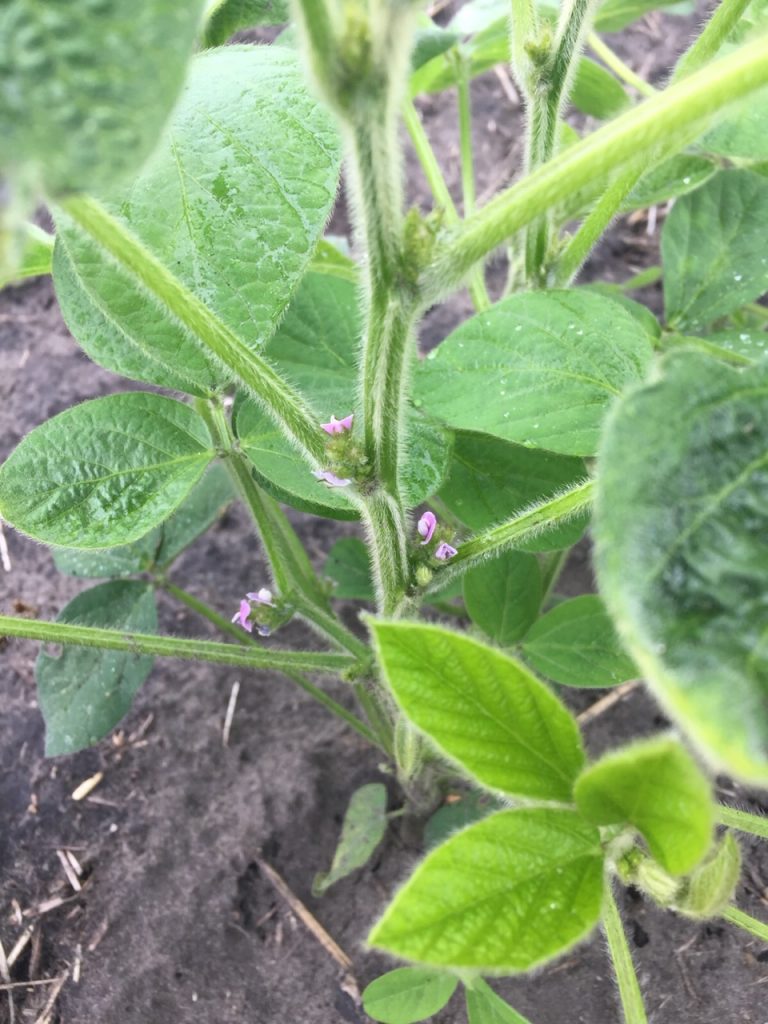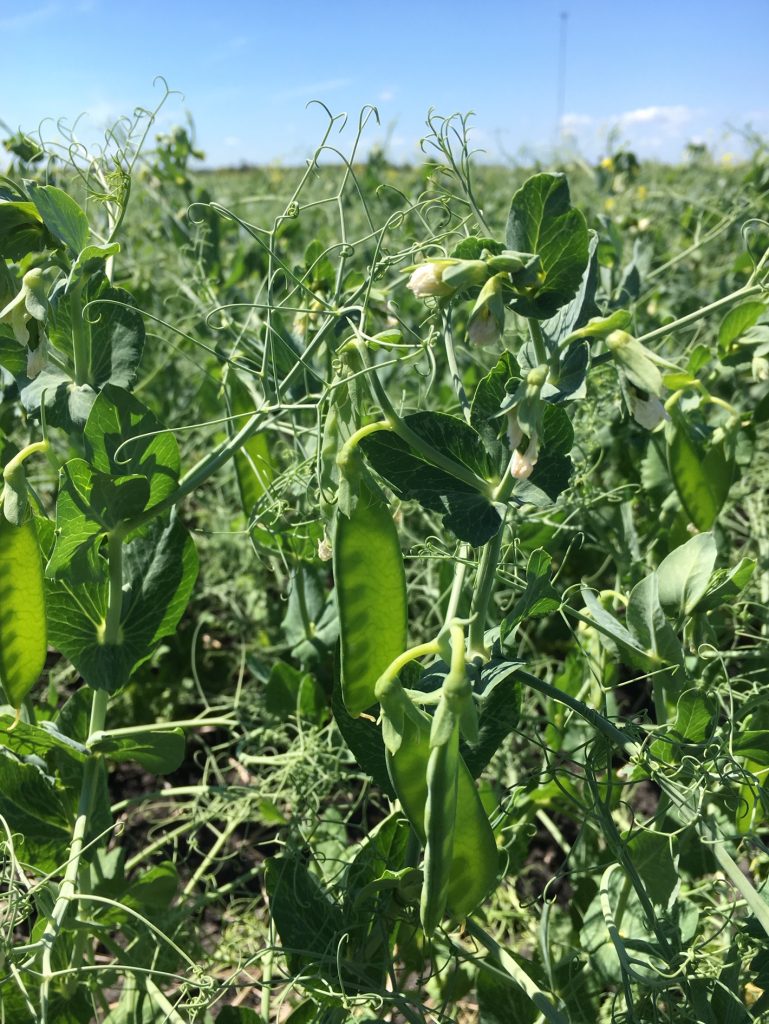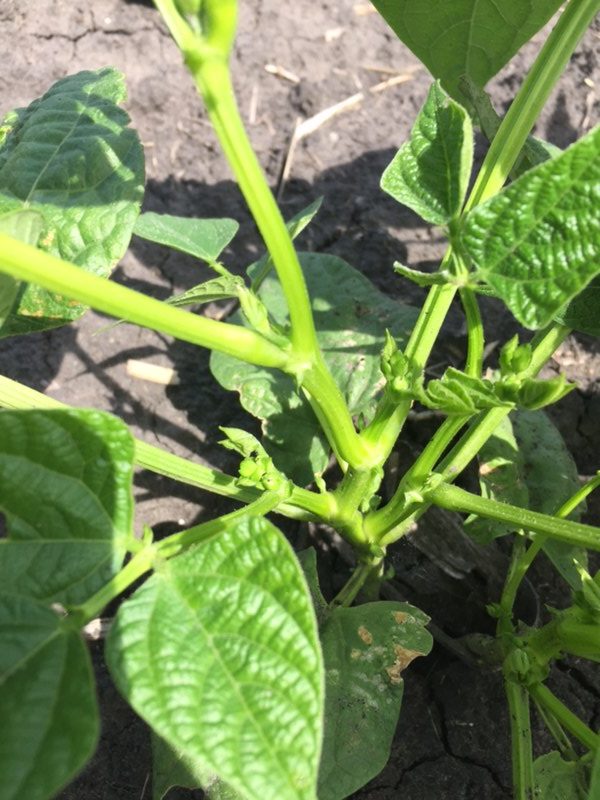JULY 10, 2019
- Crop Update
- Pea and Soybean Aphids
- Foliar Diseases
- Summer Field Tours and Events:
- Keep it Clean! Agronomist and Ag-Retailer Webinar – July 10
- Soybean Management and Research Transfer (SMART) Day – July 23, Carman
- Crops-a-palooza – July 24, Carberry
Listen to the Bean Report here:
Crop Update
Soybeans are mainly at the beginning bloom (R1) stage, with 4-7 trifoliate leaves. Some soybean crops have yet to flower, while others will be pushing into the R2/full bloom stage later this week. Be sure to assess nodulation at R1 and watch for nitrogen deficiency in your soybean crop that may warrant a rescue application. Also continue to monitor for root rot.
Dry beans are mainly at the bud stage (V5/V8) with flowers expected to open this week, initiating the reproductive phase (R1). Nutrient deficiencies are now showing up (e.g., zinc deficiency). Scout for both macronutrient and micronutrient deficiencies and consider utilizing an on-farm test for any rescue application that is considered.
Field peas range from full flower (R2) to the flat pod (R3) stage with young seeds developing in the pods. Field pea nodulation assessments should also be taking place. Be on the lookout for symptoms of Aphanomyces and any progression of Mycosphaerella blight in the crop canopy.
Faba beans are also mainly at the flat pod stage (R4), with pods pushing out of the lower flowering nodes. Nutrient deficiencies are also showing up within pockets of the odd faba bean field.
Thistle caterpillars have appeared again in Manitoba, with high populations reported in the northwest region. In most cases, they do not pose a threat to the crop and there are no products currently registered for control. Continue to monitor levels as they begin to pupate.
Pea and Soybean Aphids

Scout for pea aphids throughout flowering until early pod. At four locations per field, check the top 8 inches of five random plant tips, or conduct 10 sweeps with a sweep net. The economic threshold is 2–3 aphids/plant tip or 90–120 aphids/sweep. Application at first pod will protect plants from feeding during pod formation and elongation.

Scout for soybean aphids from July to mid-August in Manitoba during the R1 to R5 stages. Their arrival depends on populations in the northern U.S., as they arrive predominantly by southern winds. Low populations have been reported in North Dakota, which tells us that we should be on the lookout. Assess the entire plant, including the undersides of leaves and stems, on 30 plants per field (e.g., six plants in five areas). If detected, use the Aphid Advisor app to evaluate the population.
Everything you need to know about soybean aphids in Manitoba has been compiled in one fact sheet by Manitoba Agriculture and MPSG. See Soybean Aphids: Identification, Scouting and Management.
Identifying Foliar Diseases

Foliar diseases have begun to show up in pulse and soybean crops. These diseases are less concerning as they have lower impact on production and quality. However, they appear conspicuously in the crop and can be worrisome at first sight.
Foliar diseases reported this season include downy mildew in field peas, bacterial blight in soybeans, dry beans and field peas, and Septoria brown spot in soybeans. Click on the links to learn more.
Sharpen your Pulse & Soybean Agronomy Skills at SMART Day
July 23, 9:00 – 3:00 at the University of Manitoba Ian N Morrision Research Farm, Carman. Registration opens at 8:30 | Lunch will be provided.
Register today to reserve your spot!
This dynamic field tour will be featuring the following research highlights:
- Crop rotations for pulses and soybeans
- Cover crops to build soil health: new research in MB
- Emerging diseases in soybeans and pulses
- Novel and diverse weed management tools being tested in MB
- On-Farm Network vs. small plot research – answering inoculation questions and much, much more
Pre-registration is required by July 19. This event is free for farmers in good standing with MPSG. Agronomist/non-member fee is $50.






